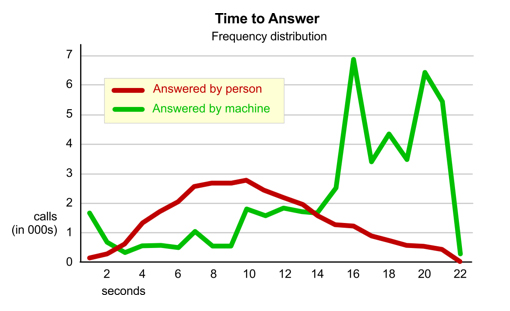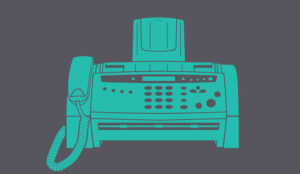Garry Pearson from Sytel shows that you can improve your dialler by changing your ‘Ring No Answer’ (RNA) times.
If your contact centre uses a predictive dialler to place outbound calls, you should be aware of Ring No Answer (RNA) times. RNA is one of the few key factors within your control that can determine the performance of your outbound campaigns. It is defined as ‘the duration an initiated call rings at the destination before being killed as a “No Answer”‘. Contrary to popular belief, if your RNA value is too high, the chances are your dialler, and therefore your agents, are underperforming.
If asked “How should RNA times be set for maximum productivity?” an alarming number of people would answer “the longer the better”. This is actually the answer to a different question – “How should RNA times be set to reach the maximum number of people for x call attempts?” This is not the same as productivity.
Unless you can extract business value from answer machine calls, the optimum RNA setting for your business will fall between 15 and 18 seconds. This holds no matter whether you are calling mobile phones of the under-25s or people living in retirement communities. In addition, as answering patterns are similar worldwide, it also holds no matter where you are calling.
Real-life answering patterns

The data for the following graph is taken from a large UK-based corporate customer who outsources some of their customer acquisition programmes.
The graph shows connect times for all connected calls, both live and machine. The customer had Ring No Answer set to 22 seconds. The sample covers around 30,700 calls answered by a live person.
The red line shows live people. The green line shows machines. As you might expect, median time to answer for human respondents is 9-10 secs, with responses tailing off to very few at 20+ secs.
This particular customer has their agents screening machines rather than doing AMD (Answering Machine Detection). You can see that at 16 seconds and beyond the overwhelming majority of calls answered were in fact answer machines picking up.
The red line on the graph clearly shows the phenomenon of diminishing returns. This is obvious in other walks of life but strangely misunderstood in the call centre world. Imagine an insurance salesman knocking on doors. He knows that 9 out of 10 people (if they are home) answer the door within 30 seconds. If he wants to maximise his productivity for the day, he knows there is no point standing at the door for 2 minutes. After 30 seconds he will try the next house, even though he knows he is turning his back on the occasional elderly person or busy mum who is a little slower than average.
A similar principle (although with more complicated factors) holds true for outbound calling. The question is: how long should you stand at the door?
Looking at the graph, if you carry on ringing past 16 seconds, around 90% of consumers will have answered already and your trunks will be tied up waiting with a dwindling probability of reaching a person. Of course, any RNA setting carries the expense of not reaching a certain number of people you might have connected to if the RNA had been longer. But here’s the crunch: if you assign an opportunity cost to those who didn’t answer in time at various RNA settings, you can work out the optimum RNA setting for your line of business.
The bottom line is that every time we have done this exercise rationally and honestly with our customers, we come back to the conclusion that unless you can extract business value from answer machine calls, the optimum RNA setting for your business will fall between 15 and 18 seconds.
The cost of getting it wrong
Trunks are finite resources that must be managed in such a way as to bring maximum return. There is a point at which the probability of reaching a live person is outweighed by the cost of keeping the trunk tied up waiting. The longer you keep trunks open past that crossover point, the more productivity you are throwing away. As part of our service contract, we return to our new customers after a week or two of production to check whether settings are producing optimum performance. In our experience – and we have seen 45+ seconds – RNA more often than not needs to be reined in.
The result of tying trunks up is that agents will be waiting longer between calls and therefore talking less per hour. Our studies have shown that reducing RNA from say 30 seconds to 18 seconds can produce an increase in talk time of up to 5 mins per agent per hour.
In other words, by optimising your RNA you could reduce the agent pool by 1 in 10 and still complete the same workload. For a 100-seat operation, that’s a reduction of 10 agents (on an annual salary of say £15k), representing a saving of around £150k/year.
With thanks to Garry Pearson, Chief Technical Officer at Sytel Limited
Author: Megan Jones
Published On: 23rd Oct 2013 - Last modified: 11th Jan 2024
Read more about - Technology, Dialler, Garry Pearson, Outbound dialling, Sytel















